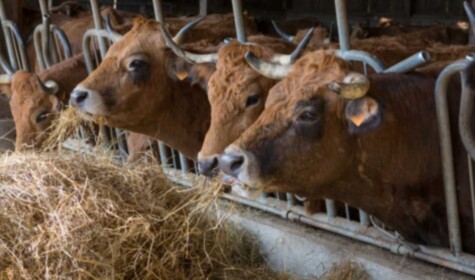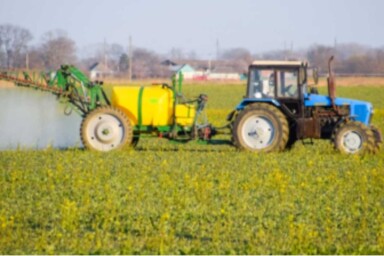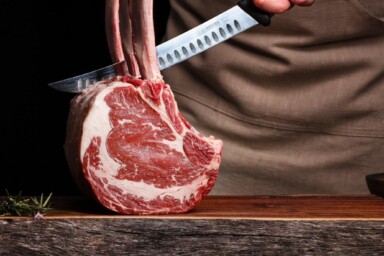In spring of 2020, as we grappled with lockdown rules and anyone who could began working from home, essential workers didn’t have that luxury. US slaughter facilities and food processing plants soon became COVID hotspots and made headline news when the virus ravaged the workforce. By early April, thousands of meat workers had fallen ill and processing plants had to be shut down, sometimes for weeks. But while the closures meant sickness and financial hardship for the workers, the processors managed to profit.
The power of the Big Four
Four large meat packing companies – Cargill, Tyson Foods, JBS and National Beef – control 85% of the US beef market. As more and more facilities closed down due to COVID-19, slaughter-ready animals backed up in feedlots and on ranches. Farmers tried desperately to find alternatives, but the few remaining small, independent processors could not cope with the demand. Every additional day for which animals stay on farm adds costs for feed and labour. To deal with the backlog of overweight cattle, ranchers were forced to sell at very low prices. While the processors were able to buy animals below the cost of production, they were nevertheless quick to warn of impending price increases: meat in supermarkets would soon be in short supply, they said, after all, social distancing rules meant that slaughter capacity would remain low even when plants reopened. The shortages never materialised, but in 2021, according to the USDA, beef prices for consumers increased by 21%, while cattle prices went down. However, the rising profits of the big processors didn’t go unnoticed.
Earlier this year, a US government fact sheet stated, ‘In July 2021, just a few months into office, President Biden signed an Executive Order to promote a fairer economy. Over the last few decades, we’ve seen too many industries become dominated by a handful of large companies that control most of the business and most of the opportunities – raising prices and decreasing options for American families, while also squeezing out small businesses and entrepreneurs.’ Also mentioned was that meat and poultry processing provide a ‘textbook example’. ‘Fifty years ago, ranchers got over 60 cents of every dollar a consumer spent on beef, compared to about 39 cents today. Similarly, hog farmers got 40 to 60 cents on each dollar spent 50 years ago, down to about 19 cents today…Even as the farmers’ share of profits has dwindled, American consumers are paying more – with meat and poultry prices now the single largest contributor to the rising cost of food people consume at home.’
During the pandemic, customers – not just in the UK, but also in the US – found a new appreciation for local food and the farmers who produced it. Politicians took note. ‘Local and regional food systems – including farmers markets – are critical to the future of the nation’s food system. As we build back better, we will support new and expanded access to markets for a diversity of growers while helping people access healthy foods,’ reads a tweet by US Secretary of Agriculture, Tom Vilsack in August of 2021. For the meat sector, the USDA identified a number of changes that they believe would help to break the stranglehold of the Big Four and facilitate the building of more local food systems. On the to-do list is: the expansion and diversification of the meat and poultry processing capacity; increasing producer income and opportunities for (shared) ownership of processing facilities; and better wages and training for workers in the meatpacking industry. There would be the money to do it all: ‘The Biden-Harris Administration will dedicate $1 billion in American Rescue Plan funds for expansion of independent processing capacity,’ says the aforementioned fact sheet.
ARPA – or the many ways to skin a cat
The American Rescue Plan Act (ARPA) is the $1.9 trillion economic stimulus bill that President Biden signed just over a year ago. The biggest chunk of the money was COVID relief that went to individuals and families. Huge sums were also allocated to businesses and to state and local aid. States were free to use the assigned money in any way they saw fit, and probably no state has pumped as much of that money into the meat processing sector as Montana, a rural state in the north-western US. On 16th March, farmer and Montana Senator Jon Tester announced that he had ‘secured more than $7.8 million in American Rescue Plan funds for 30 Montana small businesses, including 17 meat processing projects and resources for three new U.S. Department of Agriculture (USDA) certified meat processing facilities’. In Wisconsin, $5 million will go into training ‘a new generation of workers who can prepare beef, pork and other meats for sale to the public…The money will be used to attract and provide financial support to meat processing students in Wisconsin and to help the processing industry connect with prospective employees’.
For the federal government, it’s the department of agriculture that makes ARPA funds available. On 25th February, the USDA announced ‘a $215 million grant program focused on expansion of meat and poultry processing operations and facilities to strengthen the food supply chain and create jobs and economic opportunities in rural areas’. Under the ‘Meat and Poultry Processing Expansion Program (MPPEP)’, $150 million will be available for the construction of new facilities, the extension of existing ones and the acquisition of equipment; $40 million will be invested into training programs for meat workers and another $25 million are to go towards technical assistance, ‘to grant applicants and others seeking resources related to meat and poultry processing’.
Will a billion dollars be enough?
Even this amount of money is unlikely to solve the problem, says The Counter, a US online news publication, quoting Darren Hudson, Professor of Agricultural Economics at Texas Tech University: ‘It’s a horrible idea…Subsidizing small processors isn’t going to solve any real problems. In a short run, it might prop up or encourage some small processors to engage in meat processing…But unless they’re operating at a cost that’s equivalent to or very near what the major processors are, they won’t be able to compete over the long run.’ Building facilities is one issue, running them competitively quite another. ‘They’re throwing all this money at these plants,’ Austin Frerick, deputy director of the antitrust-oriented Thurman Arnold Project at Yale University, told The Counter. ‘I just expect that in a few years they’ll go broke and then the big companies will buy them for pennies on the dollar.’
Ranchers, too, don’t believe that new slaughter facilities will break the dominance of the big processors. Already in 2019, the Ranchers-Cattlemen Action Legal Fund United Stockgrowers of America (RCALF USA) filed a lawsuit against the Big Four, alleging anti-competitive business practices. What might help the situation is the reform of the 1921 Packers and Stockyards Act, a set of laws that aimed to protect producers from unequal treatment and price fixing. In 2016, the Obama administration set out a number of reforms that would have given farmers and ranchers better legal protection, but the plans were shelved by the Trump administration.
Things may not change dramatically under Biden. ‘They’re going to essentially establish a hotline so cattle producers could continue complaining about potentially anti-competitive practices to a regulatory agency that hasn’t done anything about all of the previous complaints that have been filed,’ RCALF USA president Bill Bullard told The Counter. A change in the law may be the best way to solve the problem, but with partisan politics and only a wafer thin Democrat majority, it’s unlikely to happen any time soon.





